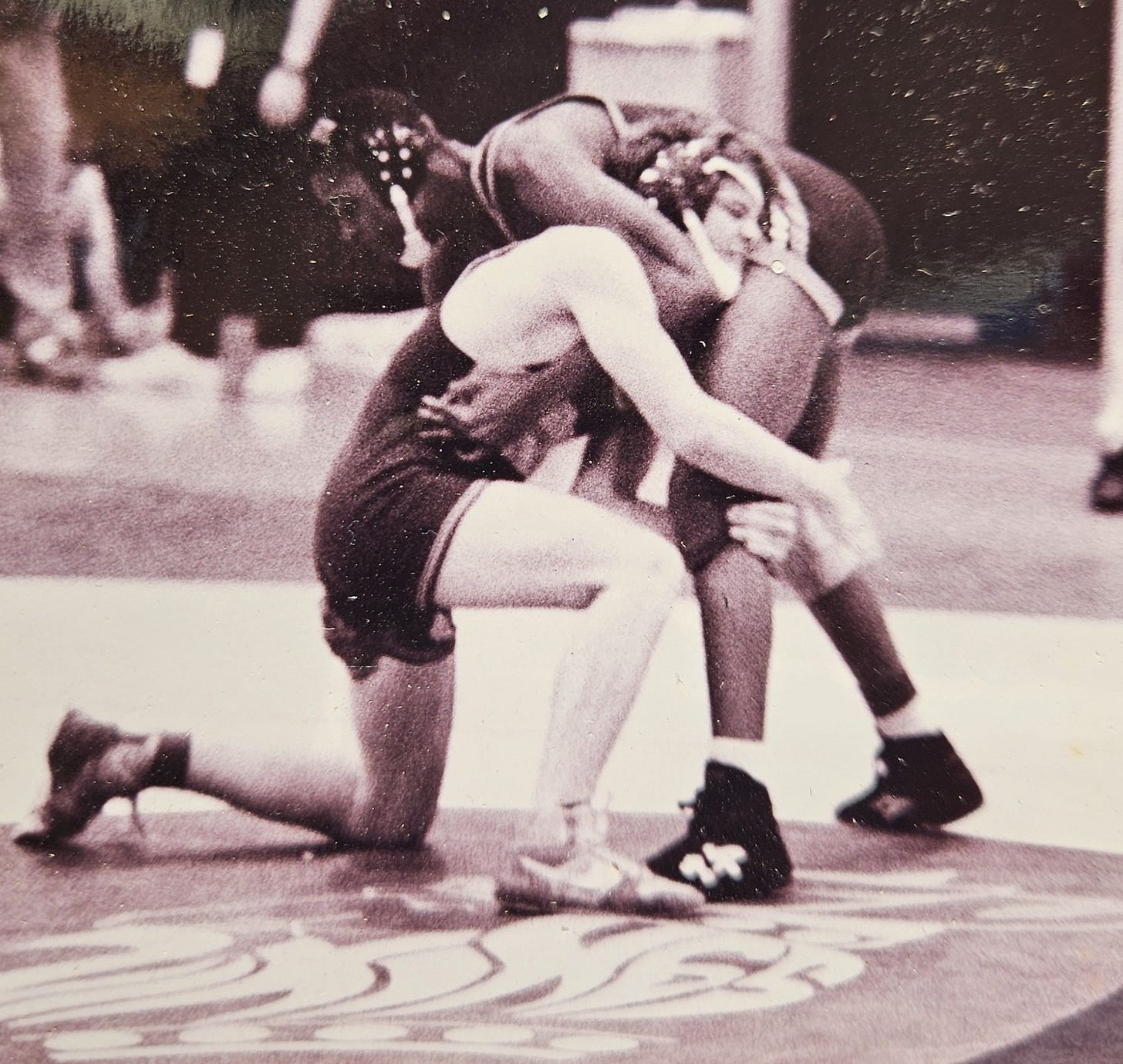Holding two contradictory ideas at once in your mind is a bit like the beginning of a wrestling match.
Two complex ideas in your mind start to do battle, and it usually looks like one idea or the other is on top at the moment. But: a wrestling match only usually ends in a pin or when time runs out, not when one wrestler gains an early advantage (although there’s such a thing as a technical pin if you’re up by a great deal of points).
Like the wrestler who is down on points, it’s good to allow the second idea to continue the match. The idea that’s currently ahead is more likely to win in the end, but that’s far from certain.
This match, too, can only end when you’re certain the idea on the bottom has been pinned. They got taken down in the first few seconds of the match? Maybe they’re better on the mat, so you should wait and see how the next period goes.
The next period, you may be wondering? High school wrestling is divided into three 2-minute periods. The first begins on the feet, and the next two are up to the participants—each gets to choose once whether to start on top, on the bottom, or with both competitors on the feet.
This little break between periods is like a pause between events in the real world.
Now, I had perhaps 30 matches in my high school wrestling career. The first period for all of these, both wrestlers began on the feet. I wasn’t terrible standing, but I also wasn’t amazing—I wanted the action to get to the ground, where I felt I was a lot stronger.
True, I would become a black belt and a state champ in judo, but those years were still ahead of me.
As a result, I might be down on points going into the second period. After a break and then a coin toss, one of us got to pick top, bottom, or standing. I picked either top or bottom virtually every time, and that changed the direction of the match more than once.
Period changes in wrestling are a little bit like when you get some surprising new piece of information about an idea that’s currently in the middle of a wrestling match in your mind.
This approach to thinking doesn’t feel great at first. Survival has strongly favored certainty for most of our existence, so we tend to try to avoid contradiction. Yet, pushing back against this instinct allows you to better consider the totality of the situation, and to make much better decisions in the long run.
People want certainty above all else, and having the ability to grasp nuance isn’t something we humans have evolved to be particularly good at, but allowing some space for more wrestling matches to continue can give you the ability to make much better decisions.
Holding space for two contradictory ideas to exist simultaneously means you don’t have quick, easy answers whenever someone asks you about your view. This can make communicating difficult, but complex ideas are always difficult to convey, and that’s no reason to make them simple.
Just keep in mind: the wrestling match isn’t over until all three periods are over, or there is a pin.






Apropos, I like calling that idea Mixed Mental Arts.
It would actually be kind of nice to have the real-life equivalent of pressing pause, reshuffling your starting positions, and getting back into the game with what feels like better chances. Alas, all we have is near-constant information overload and life's pressures. Someone needs to invent the "Pause & Reset" button.